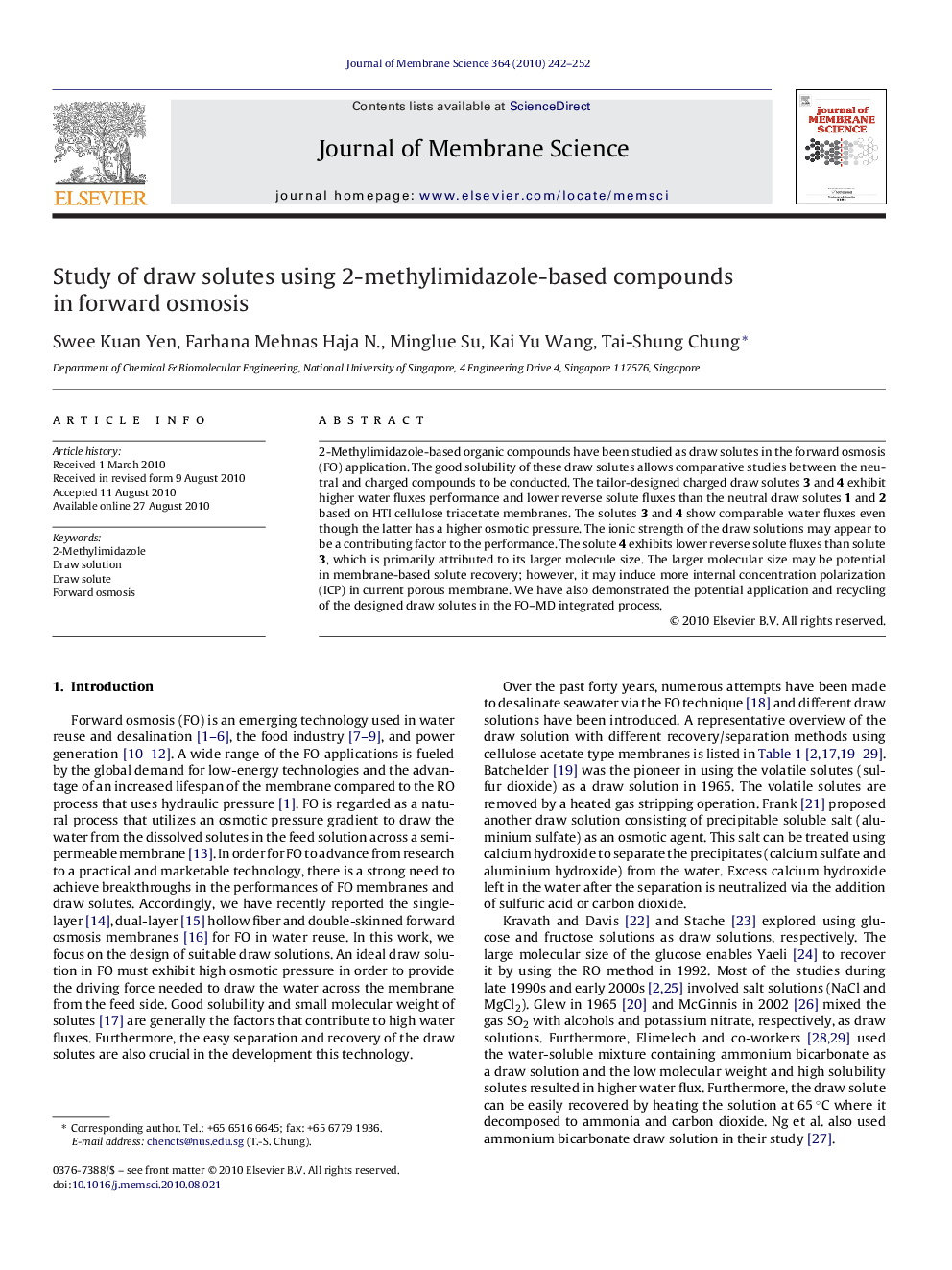| Article ID | Journal | Published Year | Pages | File Type |
|---|---|---|---|---|
| 636159 | Journal of Membrane Science | 2010 | 11 Pages |
2-Methylimidazole-based organic compounds have been studied as draw solutes in the forward osmosis (FO) application. The good solubility of these draw solutes allows comparative studies between the neutral and charged compounds to be conducted. The tailor-designed charged draw solutes 3 and 4 exhibit higher water fluxes performance and lower reverse solute fluxes than the neutral draw solutes 1 and 2 based on HTI cellulose triacetate membranes. The solutes 3 and 4 show comparable water fluxes even though the latter has a higher osmotic pressure. The ionic strength of the draw solutions may appear to be a contributing factor to the performance. The solute 4 exhibits lower reverse solute fluxes than solute 3, which is primarily attributed to its larger molecule size. The larger molecular size may be potential in membrane-based solute recovery; however, it may induce more internal concentration polarization (ICP) in current porous membrane. We have also demonstrated the potential application and recycling of the designed draw solutes in the FO–MD integrated process.
Research highlights▶ The chemistry of 2-methylimidazole-based compounds continues to advance at a brisk pace. This work would attract attention from a large group of researchers who are interested in heterocyclic chemistry. ▶ The focus here is to explore these 2-methylimidazole-based compounds as draw solutes in forward osmosis (FO) technology. Described herein are the comparative studies between neutral and charged analogues in FO experimental works. ▶ Draw solutes 3–4 have been synthesized and isolated. They were well characterized by 1H and 13C spectroscopy, ESI mass spectrometry and single X-ray diffraction. ▶ The application of these draw solutes (neutral and charged draw solutes) in FO tests is emerging. The recovery and re-concentrated draw solute 4 is discussed.
